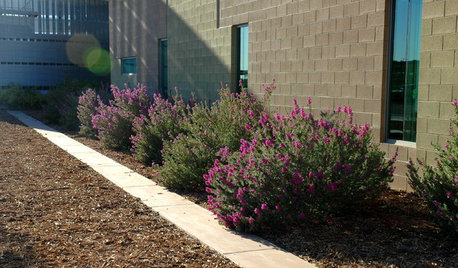Pruning question
lavenderlver
11 years ago
Related Stories

GARDENING GUIDESHow to Prune Your Flowering Shrubs for the Best Blooms
Less is often more when it comes to properly pruning flowering shrubs. Here’s what to do and why
Full Story
WINTER GARDENINGPruning Secrets for Exquisite Roses
Encourage gorgeous blooms year after year with this time-tested advice on how to prune your rosebush in winter for health and shape
Full Story
FEEL-GOOD HOMEThe Question That Can Make You Love Your Home More
Change your relationship with your house for the better by focusing on the answer to something designers often ask
Full Story
EDIBLE GARDENSHow to Grow Your Own Peaches and Nectarines
Make gardening a little sweeter with these juicy fruits, which you can eat after plucking or preserve for later
Full Story
GARDENING GUIDESDesigning With Conifers: Find the Perfect Fit for Your Landscape
Conifers range from fairy-garden size to 70 feet tall. Here’s how to decifer the plant tag for the perfect long-term fit in your garden
Full Story
CONTAINER GARDENSContainer Garden Basics: How and When to Water Potted Plants
Confused about soil moisture, the best time to water and what watering device to use? This guide can help
Full Story
GARDENING AND LANDSCAPING9 Whimsical Touches to Wake Up the Garden
If the August heat is wilting your enthusiasm, try these playful ideas to jump-start your gardening moxie
Full Story
GARDENING GUIDESHow to Avoid Overcrowded, Overpruned Shrubs
Go for a more natural look that’s easier and less expensive to maintain by giving your plants the right amount of growing room
Full Story
FARM YOUR YARDIf You Have Room for Only One Fruit Tree ...
Juice up a small garden with one of these easier-care or worth-the-effort fruit trees for a mild climate
Full Story
TREES11 Japanese Maples for Breathtaking Color and Form
With such a wide range to choose from, there’s a beautiful Japanese maple to suit almost any setting
Full StorySponsored






rhodyman
lavenderlverOriginal Author
Related Professionals
West Milford Landscape Architects & Landscape Designers · Comstock Park Landscape Architects & Landscape Designers · Chattanooga Landscape Architects & Landscape Designers · Fillmore Landscape Architects & Landscape Designers · Alamo Landscape Contractors · Annandale Landscape Contractors · Broadlands Landscape Contractors · Brunswick Landscape Contractors · East Patchogue Landscape Contractors · Golden Gate Landscape Contractors · Lake Saint Louis Landscape Contractors · Lynwood Landscape Contractors · Riverhead Landscape Contractors · Roswell Landscape Contractors · Vermilion Landscape Contractors